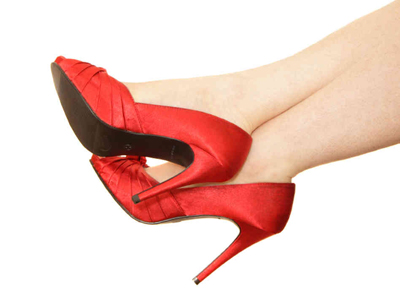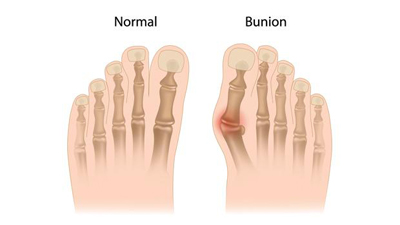
Source: www.npr.org
Heels, the epitome of elegance in the world of women’s fashion. Its three to four inches of height enhancement which is created by resting the heels on a thin “stiletto” combined with intricate designs have provided women with vertical confidence. Since the first high heel was donned by women in the medieval times back in the 1630s women around the world predominantly first world countries have been subjugating themselves with a variety of foot, ankle, knee and back problems. As the saying goes “Beauty is pain” which turns out to be quite true in this case.
Wait! Before chucking those heels away in the closet for good, let us find out why they are bad for you. You see when we humans evolved into taking our first steps with our own two legs; it turned our feet into shock absorbers that take on all our weight and tremendous amount of force acting on it. In order to prevent stress fractures and soft tissue injury from happening, our body has learnt the ability to walk in a specific pattern to distribute weight equally in every structure of the foot. This is termed as gait cycle. Try walking in front of the mirror with your bare feet and you will notice that when you bring your right leg forward, the first thing that touches the floor is your heel which is followed by placing your entire feet on the ground. Take another step with your left leg and notice that the right heel is being lifted up then the entire foot and finally the right toes follow through. Now, put on your heels and repeat the whole process once again, what do you see? Notice that the feet have been locked into a position that has eliminated all the movements that we have discussed. This is what we called a high heeled gait that increases pressure on the ball of foot by 30% which causes stress fractures and bunions. Below are the top ten foot problems suffered by women in high heels by the College of Podiatry.
Top ten foot problems suffered by women
- Blisters (55%)
- Cracked heels (45%)
- Veruccas (28%)- is a wart caused by human papilloma virus (HPV) occurring on the sole or toes of the foot
- Corns (24%)- thicken areas on the skint that can become painful
- Ingrown toe nails (20%) and Athlete’s foot (20%)
- Bunions (13%) – a bony deformity of the base of the big toe
- Joint problems (11%)
- Excessive foot odour (9%)
- Arthritis (8.8%)- painful inflammation and stiffness of the joints
- Muscular problems (8%)

Source: www.timesofmalta.com
Surveys were conducted to investigate the impact of high heels on the spine and other joints like the hip and knees. What they found is that wearing and walking in high heels causes postural changes in the spine as the heels are kept in a elevated position, in turns tilts the hip forward. This increase build up of pressure on the lower back thus causing a myriad of back problems like disc prolapse that I will be covering in future articles. With the hip tilted forward more that it should, it extends the knees more that they should and the inner part of the knee will be put in a tremendous amount of pressure leading to osteoarthritis. Not only joints are affected, they have noticed in shortening of the calf muscles and the Achilles tendons in high heels gaits. This increases the prevalence of plantar fasciitis.
With everything being said and done, it is common knowledge that high heels are bad but not many people do know the reason behind it. I do hope this article helps in making clear that your prized Jimmy Choos or Micheal Kors are not the best way for your feet to go but it does not mean you would have to stop wearing them entirely. I always advise my patients to take everything in moderation and always give your feet or body a much needed break. They will thank you for it by not giving you a world of pain in later stages of life.
Mr. Jonathan Goh is a physiotherapist currently working in Sarawak. He is passionate about increasing public awareness on important issues such as osteoarthritis.
[This article belongs to The Malaysian Medical Gazette. Any republication (online or offline) without written permission from The Malaysian Medical Gazette is prohibited.]
References
- Kinematics of high-heeled gait in Opila-Correia KA.Arch Phys Med Rehabilitation. 1990 Apr; 71(5):304-9.
- 2″Lower extremities kinematics variety of young women jogging with different heel height in Int. J. Biomedical Engineering and Technology, 2013, 12, 240-251
- Long-term use of high-heeled shoes alters the neuromechanics of human walking. J Appl Physiol (1985). 2012 Mar;112(6):1054-8. doi: 10.1152/japplphysiol.01402.2011. Epub 2012 Jan 12.
- Lower extremities kinematics variety of young women jogging with different heel height by Yaodong Gu; Yan Zhang; Wenwen Shen International Journal of Biomedical Engineering and Technology (IJBET), Vol. 12, No. 3, 2013
- http://www.scpod.org/foot-health/campaigns/feet-for-life-month-2013-embarrassing-feet/
